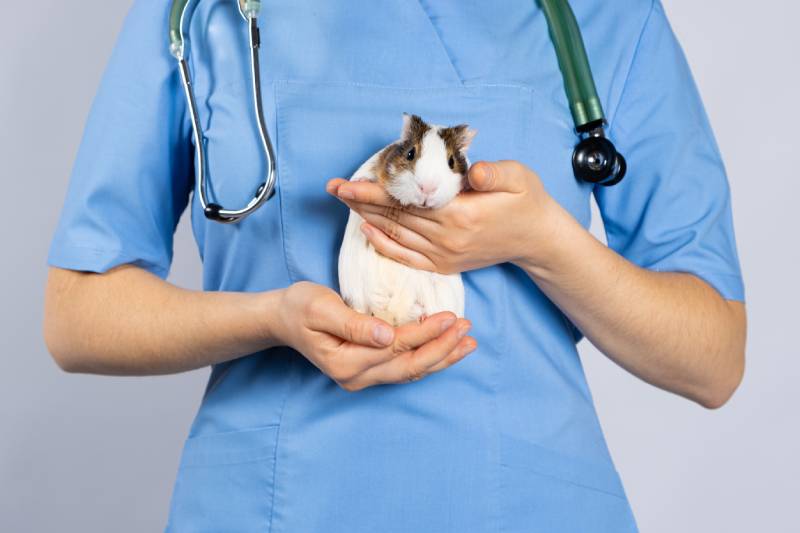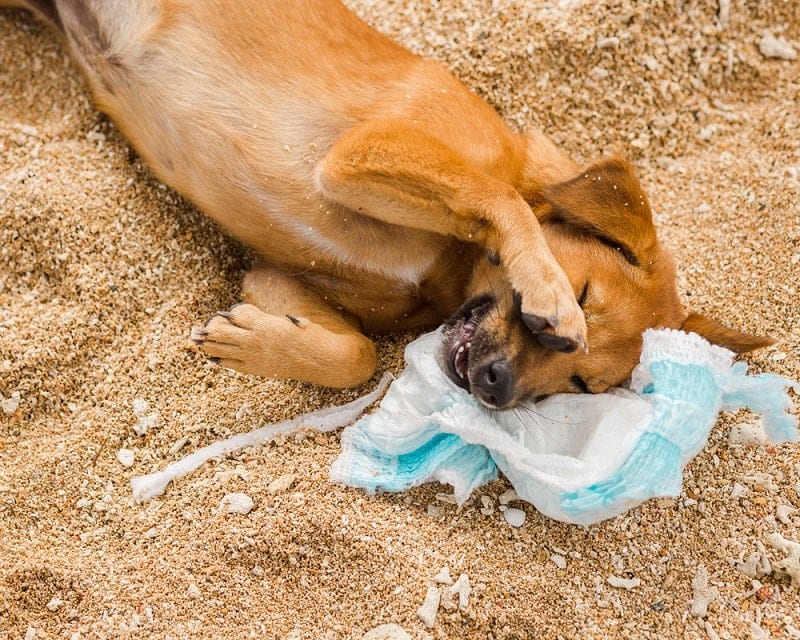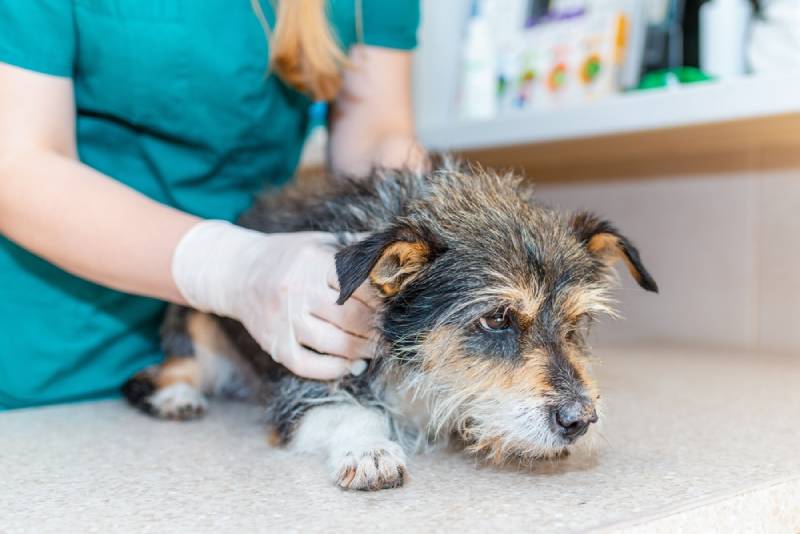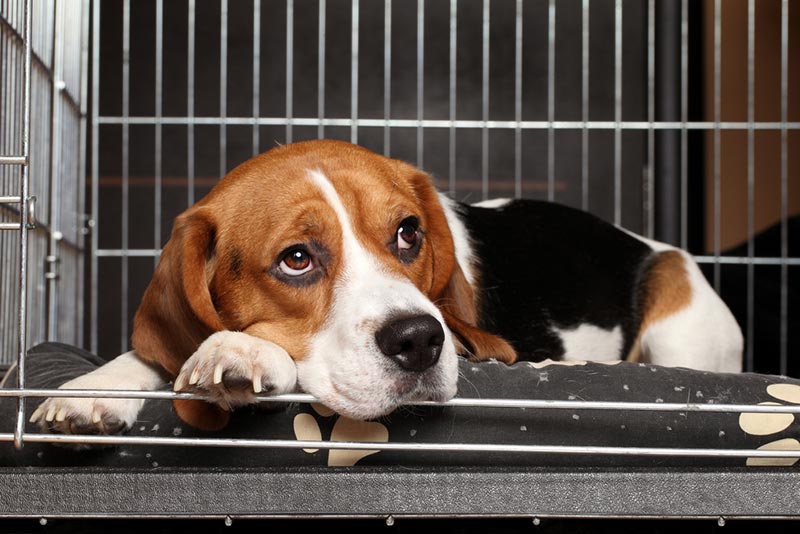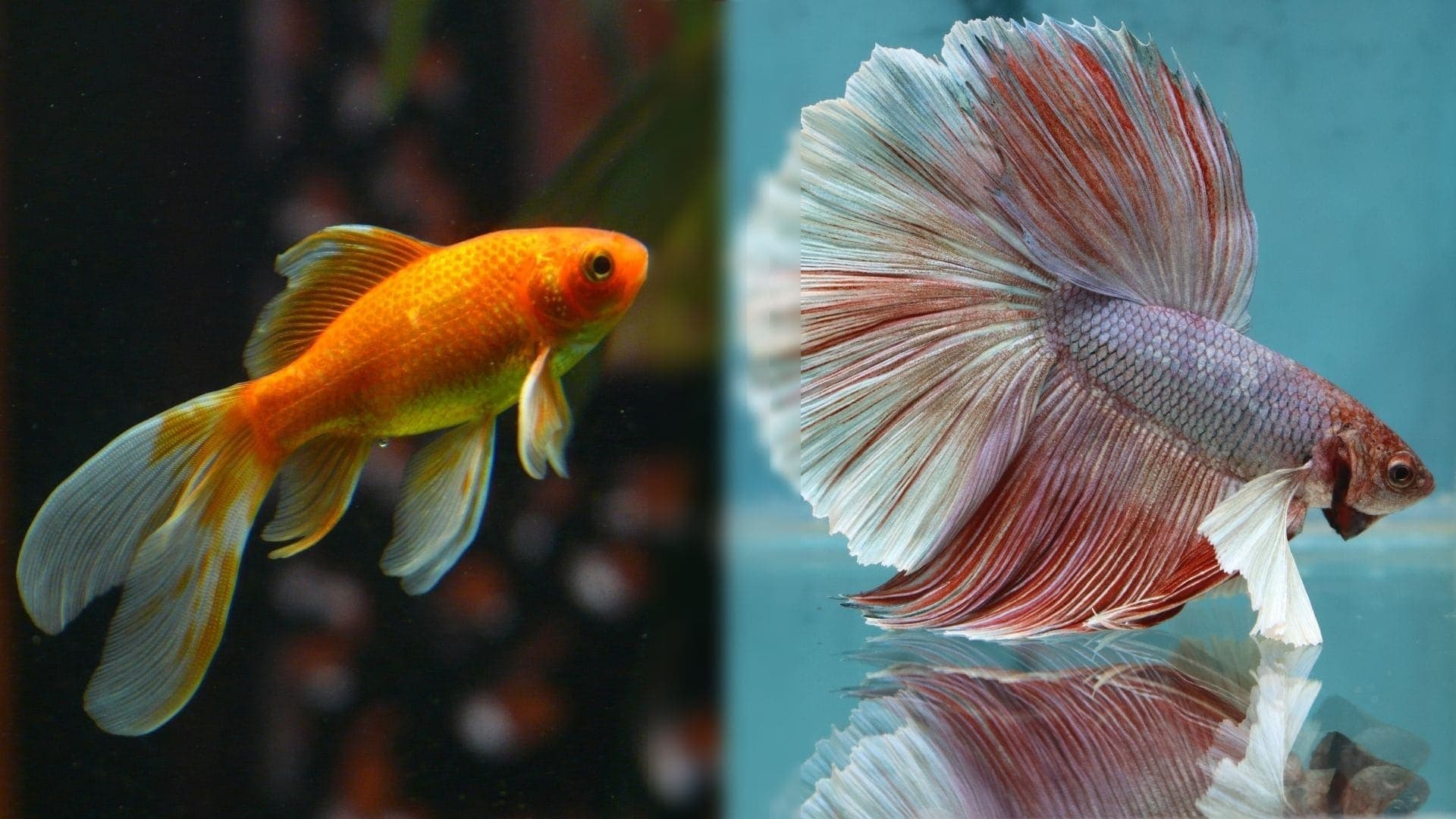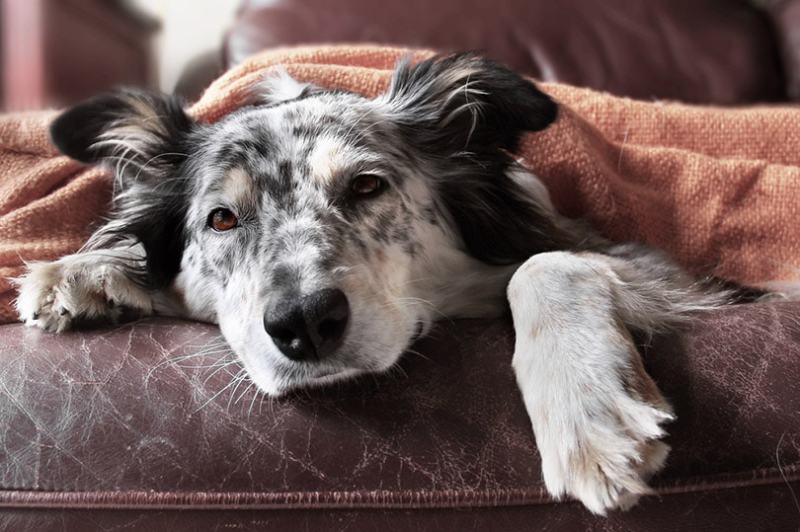10 Common Basset Hound Health Issues to Watch Out For (Vet Answer)
By Dr. Sharon Butzke, DVM (Vet)
Updated on
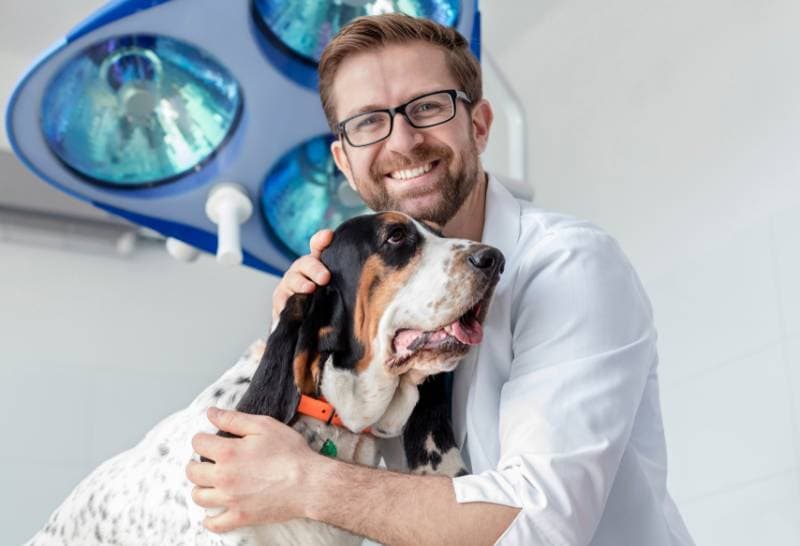
Basset Hounds are easily recognized by their long bodies, short legs, droopy faces, and adorable low-hanging ears. If you don’t mind puddles of drool all over your house and mud tracked on your floors, Bassets can make wonderful family pets!
They are susceptible to many health problems, so please keep reading to make sure your decision to bring home that cute little puppy is informed.
The 10 Common Basset Hound Health Issues
1. Ear infections
Basset Hounds are prone to getting ear infections. This is likely because their large, floppy ears don’t allow for much air circulation into the ear canal, resulting in a warm, damp environment (perfect growing conditions for yeast and bacteria).
You should plan on cleaning your pup’s ears periodically with a solution recommended by your veterinarian. Please do not put any products in your dog’s ear that haven’t been approved by your vet, and avoid cleaning their ears too often! Once or twice per month should be fine for most dogs.
If your Basset gets a lot of ear infections, your veterinarian may recommend an investigation into possible underlying issues (like allergies).
What To Watch For:
- Head-shaking
- Scratching at the affected ear(s)
- Rubbing the affected ear(s) on the ground
- Tilting the head towards the affected ear
- Red pinna (ear flap) that feels warm to touch
- Objecting to you touching the affected ear(s)
- Build-up of discharge inside the ear canal
- Foul odor coming from the ear(s)
Please do not attempt to treat your pup’s ear infection on your own. It is important for your veterinarian to check their eardrum and select an appropriate medication based on cytology (looking at an ear swab under the microscope to determine whether yeast, bacteria, or both cause the infection).
2. Skin issues
Basset Hounds have many lovely skin folds that, like their giant ears, can trap heat and moisture. What likes heat and moisture? Yeast and bacteria!
Bassets are also prone to primary seborrhea1, an inherited skin condition that affects the oil glands and causes them to produce too much sebum. This can also contribute to yeast and bacterial skin infections.
Just like their ears, your Basset’s skin will also need regular care. Ask your veterinarian to recommend a medicated shampoo for bathing and special wipes for daily cleaning of skin folds. People often mistakenly think that baby wipes are gentle for their pup’s skin, but, in fact, human and dog skin have different pH levels. Stick to products approved by your vet.
What To Watch For:
- Redness and tenderness
- Flaking and scabbing
- Itchiness
- Foul odor
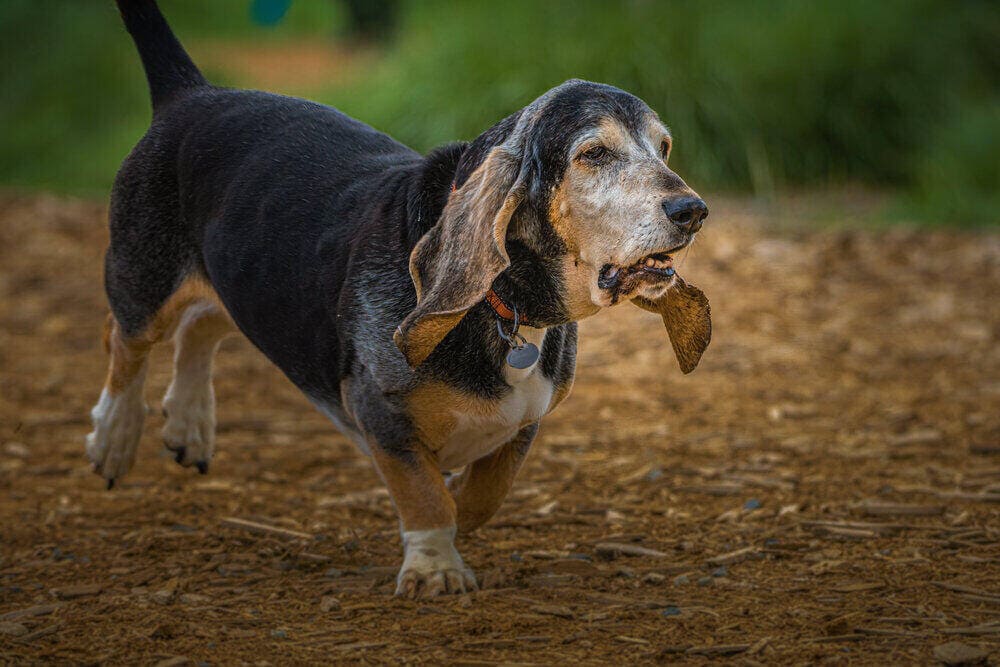
3. Angular limb deformity
The term angular limb deformity (ALD) refers to any leg that is not straight or shaped the way it is supposed to be. You may have noticed that many Basset Hounds have curved front legs. This is usually due to a type of ALD called carpus valgus, in which the front feet turn outward from the point of the wrist (carpus).
ALD is a type of chondrodysplasia, which is an inherited cartilage abnormality that affects bone growth. Other breeds with chondrodysplasia include Dachshunds and Corgis: dogs with long backs and short legs. In Basset Hounds with ALD, the ulna (one of two bones in the front leg connecting the elbow and wrist) stops growing before the radius. This causes a curve to develop in the affected limb.
Dogs who are only mildly affected may not require treatment, but severely affected dogs sometimes need surgery to avoid a life of pain and limited mobility.
What To Watch For:
- Excess curving of one or both front legs
- Difficulty walking, going up/down stairs, etc.
- Lameness (limping)
If you have a Basset Hound puppy, your vet will monitor their front legs as they grow. If they have any concerns, you may be referred to a veterinary orthopedic surgeon.
4. Elbow dysplasia
You have likely heard of hip dysplasia in dogs, which refers to abnormal hip joint formation. Similarly, elbow dysplasia is the abnormal formation of the elbow joint. Basset hounds are known to be susceptible to elbow dysplasia, in particular, a type called ununited anconeal process (UAP).
Unfortunately, little data is available regarding how many Basset Hounds are affected by this condition. There are currently no genetic tests to help screen breeding dogs, which makes it challenging to prevent. However, dogs known to have elbow dysplasia should not be bred.
What To Watch For:
- Lameness (limping) on one or both front legs
- Stiffness when getting up from lying down
- Difficulty going down stairs
- Not wanting to exercise
- In severe cases, the affected elbow(s) may be swollen
If you are concerned that your Basset may have elbow dysplasia, schedule an appointment with your veterinarian. X-rays are needed to diagnose this condition.
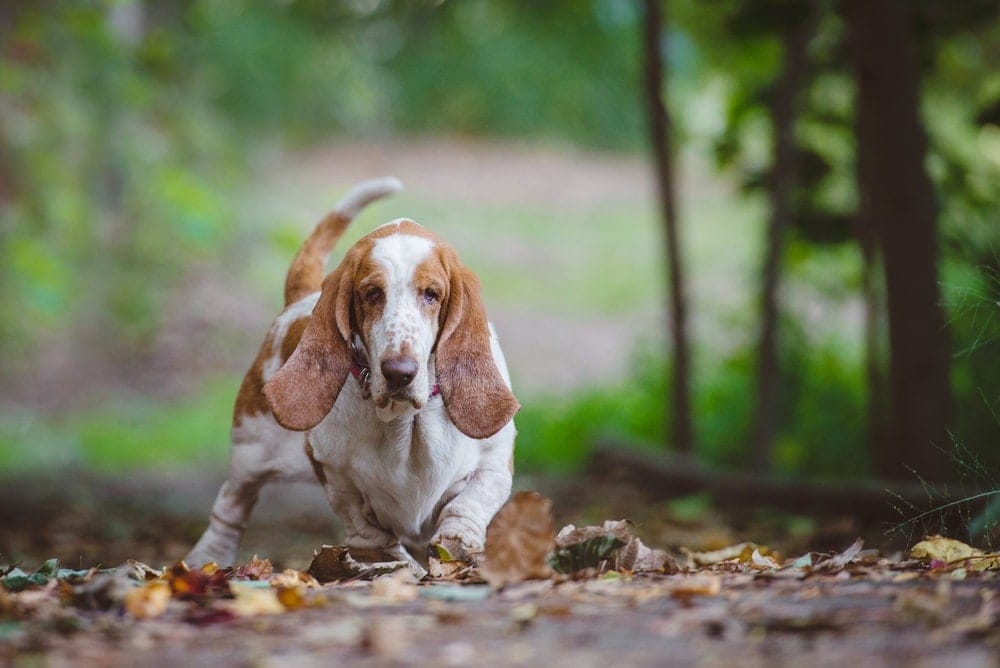
5. Intervertebral disc disease
Dogs with long backs and short legs, like Basset Hounds, are prone to developing intervertebral disc disease (IVDD) as young adults, whereas other breeds are more likely to develop the condition in their senior years. Discs may be thought of as “cushions” between the vertebrae of the spine. When they degenerate, they can herniate (bulge out) and put pressure on the spinal cord.
Mild cases of IVDD can often be managed with medication and rest, but more severe cases may need surgery (this requires referral to a veterinary specialist). Recently, scientists have proposed a genetic basis for IVDD in Basset Hounds (and other breeds), which may lead to a screening test for breeding dogs in the future.
What To Watch For:
IVDD is initially a painful condition, but it may progress to cause paralysis.
- Hunched posture (arched back)
- Neck or back pain
- Moving in a careful, guarded way
- Dragging one or both hind feet
- Ataxia (generalized incoordination)
Your veterinarian might suspect IVDD based on your pup’s neurologic exam and x-rays of their spine, but advanced imaging like magnetic resonance imaging (MRI) may be required to confirm the diagnosis.
6. Gastric dilatation-volvulus
Gastric dilatation-volvulus (GDV) is a condition that all owners of large, deep-chested dogs should be familiar with. It is often referred to simply as “bloat.”
GDV occurs when the stomach fills up with air like a balloon (dilatation) and becomes twisted (volvulus). This results in significantly reduced blood flow to the stomach and the rest of the body (due to compression of major blood vessels in the abdomen) and quickly leads to shock. GDV is a life-threatening emergency requiring immediate veterinary treatment.
The exact cause of GDV is not fully understood, but some factors seem to be associated with higher risk, such as eating only one meal per day, having a nervous temperament, and having a family history of the condition.
For dogs that are known to be predisposed to GDV (like Basset Hounds), some veterinarians recommend performing a surgical procedure called a prophylactic gastropexy. In simple terms, this means suturing the stomach to the body wall as a preventive measure. It is often done during spay or neuter surgery and can be performed through a traditional incision into the abdomen or via laparoscopy.
Gastropexy cannot prevent the stomach from filling up with air but usually prevents the twisting part, which buys you a little more time to get your pup to a veterinarian.
What To Watch For:
- Swollen, painful abdomen
- Attempting to vomit (may or may not produce anything)
- Drooling
- Restlessness, unable to settle
- Fast breathing
- Pale lips and gums
- Weakness
- Collapse
It is not possible to determine whether the stomach has twisted without taking an X-ray. If your dog is showing any of the signs listed above, seek veterinary attention immediately.
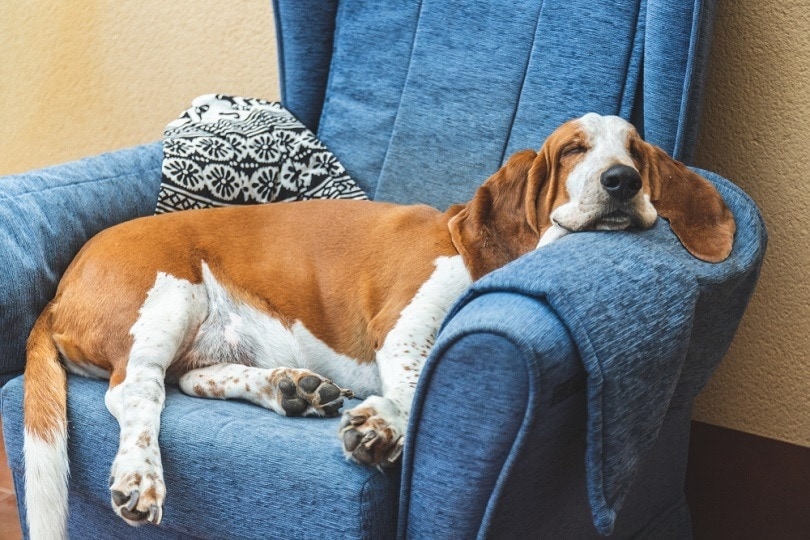
7. Entropion and Ectropion
Entropion and ectropion are conditions affecting the eyelids.
- Entropion is when an eyelid rolls inward
- Ectropion is when an eyelid droops and rolls outward
Both conditions can cause your pup discomfort, but it is particularly important to correct entropion to avoid damage to the cornea caused by the eyelid rubbing on the eye.
In some cases, more than one surgery may be needed. This is because veterinarians are careful to avoid being too aggressive during the initial procedure, which may result in “over-correcting” the problem.
What To Watch For:
Entropion and ectropion are usually relatively easy to identify.
- Redness
- Discharge
- Squinting
- Pawing at the eye(s)
- Rubbing the eye(s) on the ground
If you notice any of these signs, schedule an appointment with your veterinarian right away. It is important to treat eye problems promptly in order to minimize your dog’s discomfort and reduce the risk of permanent damage (e.g., scarring of the cornea).
8. Glaucoma
Glaucoma is abnormally high pressure inside the eye. Basset Hounds can develop an inherited form of glaucoma called primary glaucoma. Glaucoma is a painful condition that, if not treated, can cause blindness.
What To Watch For:
- Redness
- Watery discharge from the eye
- Squinting, blinking more than usual
- Cloudy or blue-looking cornea (surface of the eye)
- Not wanting the affected eye(s) to be touched
- Generally not feeling well (decreased appetite and energy level)
- Bulging of the affected eye(s)
If you notice any of these signs, please have your pup examined by a veterinarian right away.
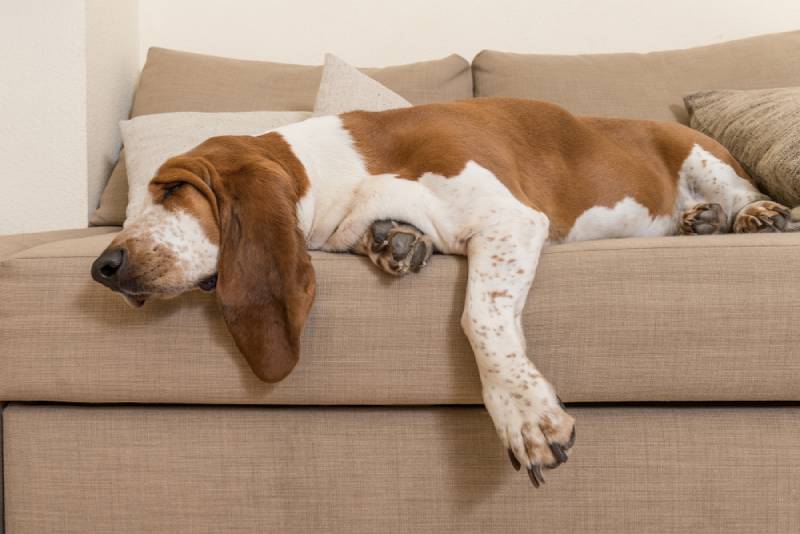
9. Thrombopathia (Basset Hound type)
Thrombopathia is a blood-clotting disorder caused by abnormal platelet function. Basset Hounds can have a specific, inherited type of thrombopathia that causes spontaneous bleeding or excessive bleeding in response to trauma. Bleeding may be mild or severe.
Unfortunately, we do not have data to show how many Basset Hounds are affected by this condition. Your veterinarian may recommend running some tests to assess your pup’s platelet function before performing any kind of surgery, just to be safe.
There is no cure for thrombopathia, but affected dogs can still live long and happy lives. A genetic test is available to help breeders avoid passing this condition on to future generations of Basset Hounds.
What To Watch For:
- Bleeding from the gums after chewing on something hard
- Bruising easily
- Nosebleeds
- Black, tarry stool (a sign of internal bleeding)
- Limping (if there is bleeding into joints)
- Excessive bleeding during surgery or after a traumatic injury
10. X-linked severe combined immunodeficiency disease (Basset Hound type)
X-linked severe combined immunodeficiency disease (X-SCID) is a very serious disease. Affected dogs cannot produce a specific protein that is critical for proper immune system function. As a result, they are highly susceptible to infections. Sadly, this condition is usually fatal by 4 months of age.
X-SCID is an inherited condition; fortunately, a genetic test for Basset Hounds is available. This allows breeders to screen their dogs and avoid using any males or females who carry the mutated gene.
What To Watch For:
Signs of SCID usually start appearing at 6-8 weeks of age because most puppies are weaned around this time and no longer have the protection of antibodies passed to them through their mother’s milk.
- Failure to thrive (generally not doing well)
- Not growing properly
- Losing weight
- Low energy
- Vomiting and diarrhea
- Infections
Conclusion
Hopefully, this article has given you much to consider before welcoming a Basset Hound! If you are considering purchasing a Basset puppy, it is vital to choose your breeder carefully. Don’t be afraid to ask questions about the health of the breeder’s dogs and what kind of screening (including genetic testing) they are doing to minimize the risk of inherited conditions. A good breeder will appreciate your investment in your pup’s health, take pride in their breeding program, and be more than happy to provide this information!
If you are adopting an older Basset, there is not much you can do to prevent most of these health problems. However, it is still good to be informed and know what conditions to watch out for. This will help you recognize issues quickly and seek prompt veterinary care if needed. Good luck with all the drool!
Featured Image Credit: sirtravelalot, Shutterstock



